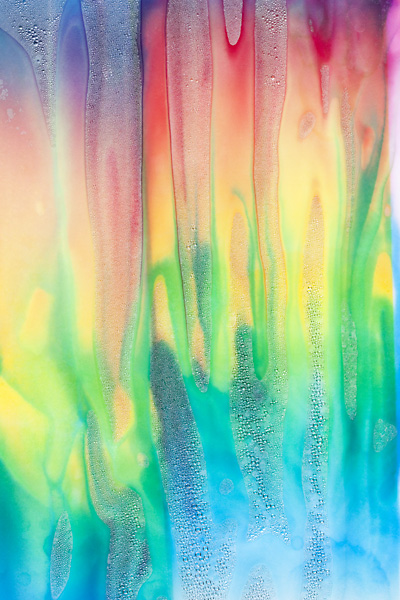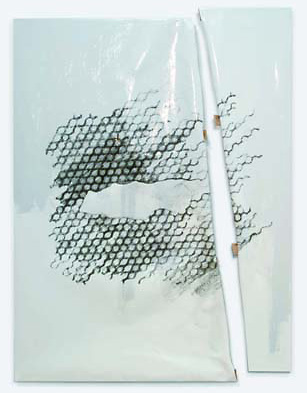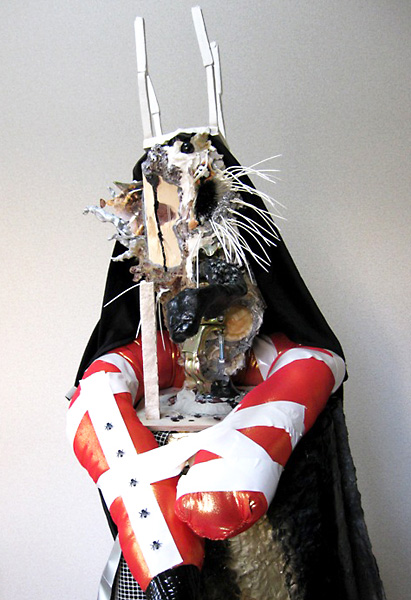g³/ gallery
g3/(triple-g) is a project room combining an editorial school “Super
School”, “Gallery” and editing studio, “Edit Room”. This facility is
based upon the vision and skill pursued by Shigeo Goto in the
investigation of the potentials of editorial activity and will expand
the work of “Super School”, which has been established for 14 years.
This year’s tutors will be Shigeo Goto, Hideki Nakajima, Shigeki
Hattori and Yoshiko Mihara. In the gallery, we are committed to
promoting young artists to the world, with a particular focus on
painting and installation.
http://g3tokyo.jp/
g³/ gallery
has selected artists which take the many elements which exist within
the city of Tokyo and their change, transformation as their central
issue. The response of the artists to our questioning of the city is
presented in this exhibition. It is our aim to amplify the
transformation of foreign elements and to visualize this in response
to the theme of “Tokyo”, a city which connects both the local and the
global, presenting the here but not here, the not here but here.(Shigeo
Goto)
<Selected Artists>Norihito Ogata, Taisuke Koyama, Hideki Nakajima, Miyuki
Mitsui
緒方範人|Norihito OGATA
Born in Tokyo, 1975. After attending Maine Photographic Workshop
(1999) and Photography department at Herkimer County Community College
(2001) in the U.S, as well as Osamu Kanemura Workshop (2003) in Japan,
Ogata has been participating in many exhibitions including The Place
That Jane Likes (Muramatsu Gallery / 2004), Hieronimus Backbone
(KONICA MINOLTA PLAZA / 2005), The Formation of Tomorrow (KONICA
MINOLTA PLAZA / 2006), Descubrimientos PH E08, Photo Espana 08 (Madrid
Spain / 2008) and Cassandra Had the Strangest Dream (KONICA MINOLTA
PLAZA / 2009). Constructed with the found digital images on Google’s
‘street view’, Ogata’s photographs depict the scenery of architects’
desire, the perfect urban landscapes. Ogata will hold his solo
exhibition at g³/ gallery in June, 2010.
http://www.asahi-net.or.jp/~jx7n-ogt/

"Extraordinary Machine#5" 2010
photography print
Courtesy of G/P gallery
I think of
the city as a form of image database. The images are brought together
as a photo montage, they are the basic data which constructs the
whole, and become even a reference for CG modeling. For example
even in my case as someone who creates photo like low-resolution
images which can be found on a web search engine, Tokyo, the city
where I was born and brought up and to continue to carry out my
activity in, is an image resource containing the high resolution
elements which can be searched for in every day life.
小山泰介|Taisuke KOYAMA
Born in Tokyo in 1978. Lives and works in Tokyo.Koyama’s work engages the organic and abstract aspect of photography.
For Koyama, relentless change in the city occurs as a cycle of
metabolism identical to that of other living beings and nature. He
probes his view through his images of facet of urban phenomenon and
the growth appears on the surface and façade of artifacts as a
manifestation of the organism.
Koyama had solo exhibitions including "Boundary X" at gallery ROCKET
(Tokyo), ‘entropix’ at G/P gallery and Spiral respectively, and most
recently at the foyer of Museum of Contemporary Art Tokyo. His work
has been presented at the 11th and 12th Paris Photo and photo miami in
2008 by G/P gallery. Lately, Koyama appeared in the series of
conference ‘Tokyo Visualist Symposium’ held in Tokyo (Bellesale
Harajuku), Washington DC (Smithonian National Museum) and New York
(Japan Society).
His photo book “entropix” is published from artbeat publishers (2008).
http://www.tiskkym.com/
 "Untitled (Melting Rainbows 32)"2010 "Untitled (Melting Rainbows 32)"2010
photography print
Courtesy of G/P gallery
When I was in
high school I heard the phrase “infinite possibility” many times. Now,
even though I can not be sure who said this, it is a memory which
still flies about me. I was born and brought up in Tokyo, there were
always many different people around me, there were no shortage of
places to go, habitually encountering new things in real time.
Certainly one can view Tokyo life as full of “infinite possibilities”.
However at the same time the infinite choices which spread before me
(people to meet, places to go) I wonder if I chose with conviction,
perhaps I passed by with fear. But finally after encountering no
restriction or suppression, certain of “freedom of choice”, we find no
happiness in “infinite possibility”. We are thrown into the wide open
world in a daze, and stumblingly roam it in a state of fright.
“Infinite possibilities” can be seen as a symbol of Tokyo. But we can
not get used to thinking this way. It rather forces us into earnest
wandering.
中島英樹|Hideki NAKAJIMA
Born in Saitama, in 1961. After working for rockin’on inc., Nakajima
established his own company Nakajima Design Ltd. in 1995. Nakajima’s
graphic design is highly acclaimed internationally. He has received
many awards including New York ADC award and Tokyo ADC award. Most
recently Nakajima received the award of‘Typographic Excellence’ from
The Type Directors Club 2009 for the series of 7 prints: Infinite
Libraries. Nakajima’s works are included amongst the collections of
major institutions including the Museum of Modern Art. As well as his
solo works, Nakajima has actively participated in collaborative
projects such as ‘code’ with Ryuichi Sakamoto, Rika Sora and Shigeo
Goto, and ‘POCKO’ unit in London since 2004. Nakajima’s large
retrospective exhibition was held at THE OCT ART & DESIGN GALLERY
(China) in 2009, and his most recent work “re-street view / line” was
exhibited at G/P gallery in March 2010.
 "re-street
view/line#1" 2009 "re-street
view/line#1" 2009
oil ink on canvas, vanish
Courtesy of G/P gallery
The work
presented here is a remix of the “street view/line” work presented at
THE OCT ART AND DESIGN GALLERY, Shenzhen and goes by the title
“Re-street view / line". The motivation for this work came from a
comment made by a photographer. He stated that if he stopped street
photography the meaning of his photos would become lost. At this
moment I thought, graphic designers must be the same, instead of a
camera why not capture the city in a technique of fottage with a pen
and paper? But this kind of action is considered suspicious by some.
The title of course refers to google’s street view, which, at the time
of making this work, was at the centre of the debates on privacy – so
I wished to include this metaphor. The line of the title refers to the
city, the depiction and structure of which is often arranged through
the line. According to Yoshikazu Nango twitter, the mobile phone,
graffiti are gestures towards the connecting of society and it is from
this perspective that he is researching city. I feel a
strong resonance with these actions in which single objects are
quickly erased from mass production. The reason why I feel this is
because my work is that of a graphic designer, printing of course
being an innate action of mass production. However making one object,
one piece of work in this exhibition is both a contradiction of my
profession and its very synchronization.
三井美幸|Miyuki MITSUI
Born in Toyama, in 1983. Graduated from Special Studies in Design and
fine arts, Graduate school at Tokyo Zokei University. Mitsui has been
participating in many group exhibitions including ‘from/to’ at WAKO
WORKS OF ART in 2007, and ‘New Direction #1 exp.’ in 2009. She is
awarded for Jury’s prize at Art Award Tokyo Marunouchi in 2009.
Created with packing tapes and constructing materials, Mitsui’s
installations evoke the viewers’ mind directly and vividly. Breaking
through the ‘narrative’ and ‘withdrawnness’ of the artists in ‘the
2000’s’ generation, Mitsui is one of the key artists proving the
arrival of next generation of contemporary art in Japan.
 "Untitled" 2010 "Untitled" 2010
mixed media
Courtesy of g³/ gallery
Why do witches fly in the sky?
Why do people try to fill the gaps?
Why do people gather in the city?
Witches stride a broom and face the night's sky.
The broom, which the witch strides, is a symbol of the male.
In other words a witch is a symbol of dual gender.
In many legends the people of the past possessed both male and female genders.
Women were originally made from clay.
One part of this broke away and fell.
This became man.
Therefore women continue even today to keep the flow of blood and men who were cut off from women continue to yearn for their return.
Even now both men and women wish to return to their primary state of dual gender.
Humans have a habit of filling their gaps.
When a witch climbs her broom and flies into the sky it is a result of our desire to become complete beings of both male and female and in this completion become fully liberated.
Therefore as witches climb brooms, we congregate in cities in order to fill our gaps.
Tokyo is also a symbol of this dual state.
However when we fill the gap and become a complete union, do we really become completely liberated?
|
 Grand Opening Exhibition|3331 Presents TOKYO : Part 1
Grand Opening Exhibition|3331 Presents TOKYO : Part 1